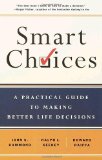THIAGI GAMELETTER:
July 2010
SERIOUSLY FUN ACTIVITIES FOR TRAINERS, FACILITATORS,
PERFORMANCE CONSULTANTS, AND MANAGERS.
TABLE OF CONTENTS
Masthead
Our mission statement, copyright notice, and cast
of characters.
Jolt
Pattern Recognition
How to outguess randomness.
Creativity
The Creativity Die
Throw a die.
Say It Quick
Faster Than… by
Brian Remer
The ripple of trust.
Discoveries
Quicker than the Eye by
Brian Remer
Lack of trust slows down everything.
Ideas
Interview with Kurt Nemes by
Brian Remer
An ethicist talks about trust.
Activities
Now You See It, Now You Don't! by
Brian Remer
How to lose—and regain—
trust.
Single Topic Survey
Do friendships and work mix? by
Tracy Tagliati
Friends in the office.
Survey Results
Mobile Learning by
Tracy Tagliati
Summary of your responses.
Webinar
Bend Your Brain with Thiagi and Tracy
Better than ADDIE?
Thiagi Podcasts
New Podcast Episodes Coming Soon by
Matthew Richter
Coming soon: A dialogue between Thiagi and Guy
Wallace about their approaches to instructional
design.
Check It Out
Thiagi GameLetter Group
Our own community.
Masthead
THIAGI GAMELETTER:
SERIOUSLY FUN ACTIVITIES FOR TRAINERS, FACILITATORS,
PERFORMANCE CONSULTANTS, AND MANAGERS.
Mission
To increase and improve the use of interactive,
experiential strategies to improve human performance in an
effective, efficient, and enjoyable way.
Editorial Roster
 Author and Editor
: Sivasailam (Thiagi) Thiagarajan
Author and Editor
: Sivasailam (Thiagi) Thiagarajan
 Assistant Editor
: Raja Thiagarajan
Assistant Editor
: Raja Thiagarajan
Associate Editors: Tracy Tagliati and Jean Reese
Contributing Editors: Brian Remer and Matthew Richter
Editorial Advisory Board: Bill Wake, Matthew Richter, Samuel van den Bergh, and <type your name here>
Copyright Info
The materials in this newsletter are copyright 2010 by The
Thiagi Group. However, they may be freely reproduced for
educational/training activities. There is no need to obtain
special permission for such use as long as you do not
reproduce more than 100 copies per year. Please
include the following statement on all reproductions:
Reprinted from THIAGI GAMELETTER. Copyright © 2010
by The Thiagi Group, Inc.
For any other use of the content, please contact us (
thiagi@thiagi.com ) for permission.
Subscription Info
To sign up, or to donate and help us continue this
newsletter, please see the Online
Newsletter page on our website (
http://thiagi.com/pfp.html ).
Feedback Request
Thiagi believes in practicing what he preaches. This is an
interactive newsletter, so interact already! Send us your
feedback, sarcastic remarks, and gratuitous advice through
email to thiagi@thiagi.com . Thanks!
[Table of
Contents]
Jolt
Pattern Recognition
Smart Choices (by John Hammond, Ralph
Keeney, and Howard Raiffa) is my favorite practical guide to
making decisions. This book has a useful chapter on
psychological traps that your mind can play when you are
making a decision. Here's a jolt that helps us to explore one
of the 11 traps.
Synopsis
Participants ask you questions about the process and
outcomes of a training session. You respond “yes” or
“no” to each question in a random fashion.
Purpose
To demonstrate how our brain makes sense of totally random
events.
Training Topics
Decision making. Critical thinking. Fallacies.
Participants
One or more.
Time
2 minutes for the activity. 5 to 10 minutes for the
debriefing.
Supplies
A random list of 40 “yes/no” responses.
Flow
Brief the participants. Make this
announcement in your own words:
I have a summary of evaluation data related to a training
package. These evaluation data are based on observation of
a training session that uses the package and test results;
they deal with the training procedure and the
outcomes.
Your job is to ask me a series of questions that can be
answered with a “Yes” or “No”. At the end of 12
such questions, I want you to give me your decisions about
what you would like to do with the training
package—and justify your decisions.
Get ready to give your responses. Hold the
random list of 40 random responses close to your chest so no
one else can see it. (They will assume that this piece of
paper contains the evaluation summary.) Invite participants
to begin asking questions.
Give your responses. Listen to the first
question. Pause for a few moments. Look at your random list.
Select any number and give the “Yes” or “No”
response associated with the number.
Continue the activity. Instruct participants to ask more
“yes/no” questions. Encourage them to discuss the
next question with each other. After each question, read the
response associated with the next number in your random
list. Continue this process until you have responded to 12
questions. If you reach Response 40 and there are still more
questions, go to Response 1 and continue in sequential
order.
Conclude the activity. Stop after you have
responded to 12 questions. Ask participants to discuss the
information they have and come up with recommendations about
what to do with the training package. Listen to the
recommendations and ask questions that probe for the logic
behind them.
Debriefing
Confess that you gave a random response to each of the
questions they asked. Explain that you resorted to this
dirty trick to expose a psychological trick that your mind
plays when you are making a decision: Your mind has an
innate need to see patterns and cause-effect relationships
even when they don't exist.
Ask questions about the implications of this psychological
trap when making decisions. Ask for suggestions for
counteracting this natural tendency to see patterns among
random events.
Learning Points
We have a natural tendency to see patterns even when they
don't exist.
Random events have no memory or conscience. They are not
related to each other.
References

Hammond, John S.,
Keeney, Ralph L. & Raiffa, Howard. (1999).
Smart Choices: A Practical Guide To Making
Better Life Decisions. (Click the cover to
order the book from Amazon.)
[Table of
Contents]
Creativity
The Creativity Die
Too much linear thinking is hazardous to creative problem
solving. To be creative, you should approach the problem (or
the opportunity) from different points of view. You should
leave a thought hanging in mid-air and move to another. This
skipping around prevents premature closure and lets your brain
incubate one line of thought while you consciously pursue
another.
Purpose
To apply the steps of the creativity process in a flexible
fashion for solving a problem or for profiting from an
opportunity.
Players
Minimum: 1
Maximum: Any number, divided into teams of 3-7
Best: 1
Time
Minimum: 30 minutes
Maximum: 3 hours
Best: 45 minutes
Supplies
- A die
- Three sheets of paper with these headings:
- Timer
- Whistle
Flow
The steps in this activity are presented below to apply to
individual play. The same steps can be used for team
play.
Select a topic. Write down a word, phrase,
or a short sentence that identifies the target of your
creative thinking. Some people choose a problem. You can be
a contrarian and begin with a solution. Don't spend too much
time trying to select this stimulus or to specify it in
clear, measurable terms. Actually, a fuzzy statement works
best.
Alan writes “Bingo” as his stimulus word. He does
not know what made him choose this particular
word—and he does not care.
Get started. Roll the die and start the
activity associated with the number that turns up. Here are
specific instructions for each number that you may roll:
- Specification
When you roll a 1—
- Set the timer for 3 minutes.
- For the next 3 minutes, identify the goals you
want to achieve. Make a list of broad goals, specific
standards, and criteria for your creative
package.
- Write these items on the Goals sheet.
Don't worry about spelling, grammar, punctuation, or
neatness. Your notes are for your eyes only. So
scribble fast and use cryptic abbreviations.
- Work rapidly. Don't evaluate the goals that pop
into your mind.
- Stop your specification activity when the timer
goes off at the end of 3 minutes.
- Roll the die again to choose the next activity. If
you roll another 1, ignore it and roll again.
Here are some sample items from Alan's
Goals sheet:
- The bingo game should be intellectually
stimulating.
- The game should be user-friendly.
- The trainer should be able to modify the game to
suit a variety of instructional topics.
- The game should not end too quickly. It should
provide an opportunity for the participants to
answer several questions.
- Investigation
When you roll a 2—
- Start the timer for 3 minutes.
- Recall bits of factual information you know about
the stimulus.
- Write these items on the Facts sheet.
Don't worry about spelling, grammar, punctuation, or
neatness. Your notes are for your eyes only. So
scribble fast and use cryptic abbreviations.
- Work rapidly. Don't evaluate the goals that pop
into your mind.
- Stop the investigation activity when the timer
goes off at the end of 3 minutes.
- Roll the die again to choose the next activity. If
you roll another 2, ignore it and roll again.
Here are some sample items from Alan's
Facts sheet:
- Bingo is an interesting game.
- People use a 5 x 5 grid to play bingo.
- Some people buy more than one bingo card.
- The object in bingo is to mark five squares in a
straight line.
- The first person to mark five squares in a
straight line yells, “Bingo!” and receives a
prize.
- Each square in a bingo card has a different
number.
- A specific range of numbers is used for each
column of the bingo card.
- Ideation
When you roll a 3—
- Start the timer for 3 minutes.
- Brainstorm interesting, creative, and practical
ideas associated with the stimulus.
- Write these items on the Ideas sheet.
Don't worry about spelling, grammar, punctuation, or
neatness. Your notes are for your eyes only. So
scribble fast and use cryptic abbreviations.
- Work rapidly. Don't evaluate the goals that pop
into your mind.
- Stop the ideation activity when the timer goes off
at the end of 3 minutes.
- Roll the die again to choose the next activity. If
you roll another 3, ignore it and roll again.
Here are some sample items from Alan's
Ideas sheet:
- Bingo can be converted into an instructional
game.
- The squares in the bingo cards may contain
different questions.
- Instead of questions, the squares may contain
answers. The facilitator can read different
questions and the players can mark the squares with
the correct answers.
- Not all bingo cards should contain the same set
of answers.
- Incubation
When you roll a 4—
- Start the timer for 3 minutes.
- Stop thinking about the stimulus. Spend the next 3
minutes in some activity that distracts you.
- Stop your incubation when the timer goes off at
the end of 3 minutes.
- Roll the die again to choose the next activity. If
you roll another 4, ignore it and roll again.
Alan rolls a 4, and thinks of taking a quick shower.
He changes his mind and decides to straighten up the
desk. He becomes engrossed in moving papers around.
When the timer goes off, Alan drops the papers and
goes back to his die.
- Iteration
When you roll a 5—
- Check to see if you have written some items on at
least one of your three sheets. If all three sheets
are blank, roll the die again. Otherwise, continue
with the steps listed below.
- Set the timer for 3 minutes.
- Review the items on the three sheets. Think about
each item and see if you can come up with another
related item. Write the new items down on the
appropriate sheets. Skip from one sheet to another in
a random order.
- Work rapidly. Don't evaluate the ideas that pop
into your mind.
- Stop your iteration activity when the timer goes
off at the end of 3 minutes.
- Roll the die again to choose the next activity. If
you roll another 5, ignore it and roll the die
again.
Alan rolls a 5. He reads this item on his
Facts sheet:
- The middle cell in a bingo card is free.
This suggests two ideas that are somewhat
inconsistent with each other. But Alan writes down
both of them anyhow:
- The bingo card should not contain any free
squares.
- Each participant should be permitted to freely
mark any one square on his or her bingo card after
marking the first two squares.
Next, Alan reads this item on his Goals
sheet:
- The bingo card should be inexpensive to
produce.
This suggests these additions to the Ideas sheet:
- The participants draw their own bingo grid on a
blank sheet of paper.
- The facilitator dictates a list of short
answers. The participants write them down in
different squares of the card in any random
order.
- Integration
When you roll a 6—
- Check if you have written some items on each of
your three sheets. If one or more of your sheets are
blank, roll the die again. Otherwise, continue with
the steps listed below.
- Set the timer for 3 minutes.
- Spend the next 3 minutes reviewing the items on
your three sheets and combining them into an
integrated package. Build on the facts, ideas, and
goals from the sheets. Keep reviewing the items and
thinking of a total package.
- Stop your integration activity when the timer goes
off at the end of 3 minutes.
- Roll the die again to choose the next activity. If
you roll another 6, ignore it and roll the die
again.
Alan rolls a 6 on his die. Looking at a single item
on his Idea Sheet, he visualizes a bingo
package that can be used by trainers to review reading
assignments or lecture presentations. Alan decides
that the “package” will consist of a set of
handouts explaining how to create and conduct the
bingo review game.
Conclude the Activity. Reserve the last
few minutes for bringing your activity to a close. During
this time, review the three sheets and decide whether you
want to integrate the ideas now or leave them aside for
another round of play at a later time.
Variations
As you become proficient in playing the
Creativity Die Game, you may
shorten or lengthen the time for each activity. However, be
sure to follow the time limits and rapidly shift from one
mode of thinking to another.
[Table of
Contents]
Say It Quick
 Reprinted from the May 2010 issue of Firefly News
Flash by permission of the author.
Reprinted from the May 2010 issue of Firefly News
Flash by permission of the author.
Faster Than…
by
Brian Remer
This month I invite you to examine the everyday ripple
effects of Trust, both when it is present and when it is not,
beginning with this story in exactly 99 words.
Faster Than…
Standing in line at the Batman Rollercoaster for 45
minutes, we were hot, sweaty, and brain numb listening to
the Joker's theme song over and over. A few people began to
leave. What was happening? Should we stay in line, get a
return on our time investment? Should we leave and cut our
losses?
“It'll be closed for hours,” my daughter speculated.
That was it. Instantly we were at the tail of a long line in
the opposite direction as her words spread and people began
to leave.
Our rumors and reputation spread faster than our
actions!
[Table of
Contents]
Discoveries
 Reprinted from the May 2010 issue of
Firefly News Flash by permission of the
author.
Reprinted from the May 2010 issue of
Firefly News Flash by permission of the
author.
Quicker than the Eye
by
Brian Remer
I've never associated either time or money with trust but
that's exactly what Steven M.R. Covey does in his book
The Speed of Trust. Covey's main
point is that when trust is lacking, whatever we are doing
will take longer. Why is this so? To insure that things will
happen, we build safeguards, write contracts, craft a
contingency plan, manage people more closely, and enforce
consequences when results don't meet expectations.
And all this, of course, costs money and eats up time. By
contrast, when trust levels are high, people do what needs
getting done knowing they will be fairly compensated,
adequately recognized, and properly appreciated for their
efforts. This all makes sense from a business perspective and
gives Covey's book a broad appeal. But his ideas also make
sense for those who are in non-profits as well as for all of
us at home and in communities.
Covey makes the case that trust is a combination of both
character and competence. We trust people who have integrity
and who can carry out their promises. Neither good character
nor a reputation for results is sufficient alone to garner the
trust one needs for successful relationships or business
deals.
Covey goes into great detail about the actions and values
that build character and competence sharing examples from well
known business leaders as well as from his personal experience
as a parent, husband, and community member. The text includes
details about thirteen specific behaviors one can practice to
increase the level of trust others have in you. These include
ideas such as Talk Straight, Show Loyalty, Clarify
Expectations, and Keep Commitments. And the book is peppered
with quotes about trust from respected thinkers worldwide.
Though most of the book provides insight about trust on an
individual and personal level, chapters are also devoted to
trust in organizations, markets, and society. Of course trust
can have its down side when people trust blindly or when trust
has been broken. But Covey addresses these issues too,
offering suggestions for avoiding such traps and providing
ideas about how to restore trust when it has been lost.
Trust is a value most people would say they espouse. Yet few
of us have taken the time to define it for ourselves. In
Covey's book, readers have an opportunity for deep reflection
plus many suggestions for enhancing what they will quickly
realize is a necessary component of any positive
relationship.
The Speed of Trust by Stephen M.R.
Covey, Free Press, 2006. ISBN-13: 978-0-7432-9730-1
[Table of
Contents]
Ideas
 Reprinted from the May 2010 issue of Firefly News
Flash by permission of the author.
Reprinted from the May 2010 issue of Firefly News
Flash by permission of the author.
Interview with Kurt Nemes
by
Brian Remer
 For additional thinking about the issues surrounding
trust, I turned to Kurt Nemes, Senior Ethics Program Officer
at The World Bank and asked him to react to some of Covey's
thinking. Here are Kurt's ideas.
For additional thinking about the issues surrounding
trust, I turned to Kurt Nemes, Senior Ethics Program Officer
at The World Bank and asked him to react to some of Covey's
thinking. Here are Kurt's ideas.
Brian: Covey's main premise is that a lack of trust
results in higher costs and increased time to get things done.
Do you agree?
Kurt: Of course. If a manager doesn't trust his or
her staff, it results in micromanagement. Staff end up having
to submit everything to the manager, who doesn't review but
who spends hours rewriting all their work. Staff spend more
time and energy worrying about what the manager is going to
say. That makes them become unsure about the quality of their
work. This leads to them becoming risk averse and in some
cases they avoid talking to the manager for fear of being shot
down. That is, they don't trust the manager to treat them like
an autonomous adult. A vicious cycle starts and morale
suffers, stress creeps in, and productivity is shot as each
person is doing everyone else's work.
Brian: Covey says that one's integrity and
intentions are not enough to foster trust. One also has to
have the ability to produce results. To what extent do you
agree with this notion of linking intention with results in
order to engender trust?
Kurt: Most people want to do well and be a reliable
team player. On top of that, no one wants to be the bearer of
bad news or say no to a request. Thus, one might have the best
intentions and promise to deliver something that they do not
have the time, energy or resources to deliver. If you don't do
what you say you are going to do, you've blown trust to bits.
Someone said, “Under promise and over deliver.” That
seems better than over-promising and not delivering at all, or
delivering an inferior product.
Brian: When you look at all the dimensions of ethics
in business or organizational life, how big a role does trust
play?
Kurt: I think it is fundamental. What often gets
lost in discussions of trust, is trusting that your fellow
worker is deep down a decent human being and motivated by the
same things we are. Rushworth Kidder has done studies on
values and when asked, people of every culture say they value
the same things: honesty, trust, integrity, fairness, family,
truth, transparency, community, etc. Trust is ultimately about
having compassion for your fellow human being and treating
them how you would like to be treated.
Brian: What's the best way to improve trust in a
work setting?
Kurt: Being open and honest and most of all making
sure that communications are two-way.
Brian: How does one go about establishing an
environment of trust?
Kurt: By remembering our common values and
aspirations. Then by demonstrating those values with one
another.
Brian: Is trust in a work setting somehow different
than in other settings such as at home?
Kurt: With your family, there is more at stake.
However I imagine most people, worried about their finances,
end up putting more energy into work and short-changing their
families. Does anyone really want to be lying on their death
bed and saying “I wish I had spent more time at work?”
Unfortunately, many end up saying, “I wish I had spent more
time with my family.”
Brian: How would you assess our current “trust
climate” as a society? Is trust at a higher or lower
level than it has been in the past?
Kurt: If you read the newspapers or watch TV news,
it would appear abysmal. However, the rise of social media and
many of the grass root organizations seem actually to be
bringing people together for the common good. Young people I
meet care about making a change and creating a good world.
Also the internet now allows us to meet people whom we might
not have met or trusted otherwise, based on prior assumptions.
Again, we see that there are universal values that unite
us.
Brian: What are some instances when it might be good
to be less trustful of others (or to extend less trust to
someone else)?
Kurt: I can only think of a few instances where it
might be an issue, and that would be in a war zone.
Brian: How much emphasis do you place on trust in
your training programs at the World Bank? What are some
techniques you use for teaching about trust?
Kurt: Trust is one of our core values, which we
always cover in our training. As an international financial
institution, the World Bank has many stakeholders who have put
their trust in us to use donor funds to alleviate poverty. Our
stakeholders include governments, civil society, vendors, poor
people, and staff themselves. All have a stake in the success
of the World Bank. If we don't honor our obligations to them,
they will lose trust in the World Bank group. This is true for
any business, but especially true because of our mission to
help overcome poverty. The best teaching technique we use is
case studies drawn from realistic situations staff face.
Brian: What have you found to be the biggest
challenges for people as you teach about trust or raise the
issue of trust with them at the World Bank?
Kurt: I don't find a challenge. When you fall back
on demonstrating how we all share common values and you give
staff the tools to solve problems, you've shown that you trust
them to make rational decisions. They will then do the right
thing, which is what ethics helps us do.
Kurt Nemes is an Ethics Program Manager at the World Bank
Group, where he develops and delivers ethics training
programs for staff. He has been involved in international
education for over 30 years.
[Table of
Contents]
Activities
 Reprinted from the May 2010 issue of Firefly
News Flash by permission of the author.
Reprinted from the May 2010 issue of Firefly
News Flash by permission of the author.
Now You See It, Now You Don't!
by
Brian Remer
One measure of trust that is easily identified is reputation.
Public figures, celebrities, and people in the news quickly
gain a reputation - usually either positive or negative. We
all have an opinion about whether we would trust them. Watch
the news with a critical eye and you'll begin to see how
fortunes rise and fall with reputation. Whom do you trust in
the national healthcare debate in the U.S.? Well, who's
talking and why should you trust them? What's their education,
their experience, their self-interest, their reputation?
Equally fascinating is how much of North American news is
dominated by what amounts to the demise of one person or
another's reputation. Tiger Woods was an icon and modern
legend until his affair was revealed a few months ago and his
reputation fell faster than the Batman Rollercoaster from its
pinnacle. Now he has the Promethean task of rebuilding his
reputation in the eyes of his public, not to mention the now
ever-suspicious gaze of his wife!
Reputation and trust are easily destroyed but difficult to
re-build without considerable time, effort, and forgiveness.
Consider these examples:
-
Japan's Prime Minister Shinzō
Abe
— On 9/12/07 Abe, a member of Japan's long dominant
Liberal Democratic Party, stepped down after only a year in
office following a wave of scandals and a humiliating
election defeat. The prime minister had seen his approval
rating plunge to a mere 30 percent. When he came to power,
he had a 70% approval rating. Now his party, which has been
in power since the end of WWII, is in total disarray.
-
Sammy Sosa, player with the Chicago
Cubs — On 6/4/03 Sosa was found with a corked bat.
One commentator wrote, “Fans will wonder which of his
famous homeruns was illegal.”
-
Martha Stewart, leader of a
multimillion dollar publishing, fashion, and home
improvement empire — On 6/4/02 Stewart was indicted
for insider trading of Imclone stock. Martha was found
guilty and spent time in prison. What impact have her
actions had on the fortunes of her company? What has the
company done to decrease the effects of her negative
reputation while still capitalizing on her personal brand?
Have consumers separated Martha's actions from the products
of her business? How has the economic empire that relies
upon her name recognition managed to keep its own reputation
intact?
-
Fred Rogers, creator of the popular PBS
TV show Mr. Roger's
Neighborhood
— Rogers was often the butt of jokes on shows like
Saturday Night Live but when
he died (summer 2003) every eulogy stressed how his public
and private personalities were totally consistent; that he
was a wonderful, caring, giving human being.
-
Jayson Blair, reporter for the
New York Times
— Blair resigned 5/1/05 because of journalistic fraud
& plagiarism. Howell Raines, Executive Editor and Gerald
Boyd, Managing Editor also resigned.
-
George W. Bush, U.S. president —
In June of 2006, George Bush experienced some of his lowest
poll numbers ever — below 30%. Early that month, he
officially designated the largest wildlife sanctuary of the
United States, a huge area of several thousand square miles
of the Pacific Ocean north of the Hawaiian Islands. His
actions were unanimously applauded by environmentalists. Yet
his polling numbers did not rise at all. Why? If people are
upset with you, what does it take to rebuild your
reputation?
So now it's your turn! As the activity for this month, look
for an example of lost reputation or trust gained that's
especially meaningful for you. When you find one, please send
me a note (email
Brian) so I can share it with other readers.
Good luck and stay in touch!
[Table of
Contents]
Single Topic Survey
Do friendships and work mix?
by
Tracy Tagliati
 Many companies today are encouraging
on-the-job friendships as they turn to more team-based work
groups. The mounting research supports their decision as
employee surveys indicate that in addition to being fun,
coworker friendships help increase job satisfaction, teamwork,
and productivity.
Many companies today are encouraging
on-the-job friendships as they turn to more team-based work
groups. The mounting research supports their decision as
employee surveys indicate that in addition to being fun,
coworker friendships help increase job satisfaction, teamwork,
and productivity.
While some companies are looking to build interoffice
friendships other companies are resistant to the idea. They
say that office friendships can actually lead to lower
productivity when a few minutes of water cooler chitchat turns
into longwinded discussions. Other uncomfortable workplace
problems can arise when both friends are up for the same
promotion and only one gets it, or when employees who work
with each other every day suddenly have a quarrel and break
up.
How about you?
Poll Question
Do you have a best friend at work?

(The poll opens in a new window.)
Open Question
What do you think are the benefits and pitfalls of having
a friend at work?

(The survey opens in a new window.)
Send us your thoughts and ideas. You may choose to include
your name along with your response, or if you prefer, keep
it anonymous.
We asked our friends this same question and here is what a
few of them had to say:
Henry: I hired a team of friends to work
for me. While they worked here they were all productive and
engaged. However, when one left, they all followed. This
left me with a huge employment gap. I would think twice
before I did that again.
Wendy: Work friends are important because
they fully understand the challenges and commitments you're
facing. Sure you can talk to your spouse, roommate, or
significant other about work, but do they really grasp the
dynamics of the office? Probably not! When it seems like my
family doesn't understand what my boss expects, my friends
at work know exactly where I’m coming from.
Mikael: I think workplace friends are a
good idea, but they are not without their problems. I
remember a difficult situation when I needed to implement a
necessary change at work that was going to negatively affect
a good friend. My friend was understanding, but I felt
terrible.
Grace: I appreciate having friends at
work. When I’ve got an idea, it's always easier to run it
past my friend who'll give me their honest opinion. I don't
have to feel embarrassed about brainstorming ideas and I can
just blurt things out.
[Table of
Contents]
Survey Results
Mobile Learning
by
Tracy Tagliati
 Last month we asked you if mobile learning
is part of your learning plan.
Last month we asked you if mobile learning
is part of your learning plan.
Here's how you responded:

(Percentages reflect votes received by June 30, 2010.)
We also asked you what you think of mobile learning?
We had some interesting responses. Here's what some of you
had to say:
Response 2) I think that we should embrace technology.
Recently during a training, I downloaded a large .pdf
reference file while seated in the class and was able to
gain more knowledge about the topic than the presenter was
prepared to deliver. Another time I actually downloaded the
presenter's .PPT off of their web site while they were
presenting. By downloading files immediately during a
presentation I can review them later instead of saying,
“what was that website I was going to go to after the
training?” Mitchell Moore
Response 5) I think there is a great potential with this
type of learning and I support it in a blended form.
Response 9) People confuse instructional design with
instructional delivery. Mobile devices are delivery
channels. They serve a useful function. But they don't alter
basic principles of design that apply to all types of
delivery channels and devices.
See more of the reader's responses or add your own.
Thank you for your responses.
[Table of
Contents]
Webinar
Bend Your Brain with Thiagi and Tracy
Tracy and Thiagi are doing a monthly webinar series,
sponsored by Training Magazine Network. You can attend for
free, but you must register.
Here's the description of this month's webinar:
Do you feel stifled by the traditional systematic
instructional design model?
Twelve years ago, Thiagi went cold turkey and quit using
his grandparents' ADDIE instructional-design model. He
developed a continuous, concurrent, creative, co-design
approach. His associates and hundreds of workshop
participants have used this approach to design corporate
training materials faster and cheaper and to produce more
effective transfer to the workplace.
In this webinar learn when, why, and how to apply
principles from chaos, creativity, and improv to design
learning packages for multicultural audiences and for the
next generation.
This month's 60-minute webinar will take place at 1pm Eastern
Daylight Time on Tuesday, July 20, 2010.
For more information, see the webinar's page at http://www.trainingmagnetwork.com./topics/show/1935
. You may need to register (and log in) before you can view
the webinar description.
[Table of
Contents]
Thiagi Podcasts
New Podcast Episodes Coming Soon
by
Matthew Richter
 We will be offering the next two Thiagi
Training Intelligence Podcasts shortly. Tune in as Matt
facilitates a dialogue between Thiagi and Guy Wallace about
their different approaches to instructional design. It was so
good, we'll need two episodes!
We will be offering the next two Thiagi
Training Intelligence Podcasts shortly. Tune in as Matt
facilitates a dialogue between Thiagi and Guy Wallace about
their different approaches to instructional design. It was so
good, we'll need two episodes!
We hope to post these by July 6th. The best way to get the
episodes automatically is to subscribe to us in iTunes, or
subscribe directly to our RSS feed ( http://thiagi.net/podcasts/ti-podcast.xml ). Or you
can get more information about our podcasts at http://thiagi.net/podcasts/ .
[Table of
Contents]
Check It Out
Thiagi GameLetter Group
I would like to start a continuing discussion about the
Thiagi GameLetter.
My goal is to get feedback and guidance from you and other
readers. Also, to create a network of people who believe in
activities-based training.
To help us do that, Raja has created a Ning group called
Thiagi GameLetter. You can visit this page
directly at http://thiagi.ning.com/group/thiagigameletter (You
may have to create an account on Ning.)
I have started an open discussion about the
GameLetter. In this forum, you can comment on
any aspect of TGL. Your comment may relate to
specific articles or specific games. Or it may contain general
feedback and suggestions for making TGL better
serve your needs.
Here are some suggested topics:
- What types of TGL articles do you find most
useful? Most interesting?
- How frequently do you use the games and activities that
are published in TGL?
- What types of articles would you like to see in the
future?
- What is your reaction to the monthly Single Item Survey
that Tracy is conducting? How can we get more participation
from the readers? What topics do you recommend for future
surveys?
- What is your reaction to the monthly podcasts that Matt
Richter is hosting? What topics do you recommend for future
podcasts?
- What are your reactions to the most recent issue? What
did you like about it and what would you like to
change?
- What other topics should be included in this
list?
Please visit the forum and participate. I look forward to
hearing from you.
[Table of
Contents]
 Author and Editor
: Sivasailam (Thiagi) Thiagarajan
Author and Editor
: Sivasailam (Thiagi) Thiagarajan Assistant Editor
: Raja Thiagarajan
Assistant Editor
: Raja Thiagarajan
 Reprinted from the
Reprinted from the  Reprinted from the
Reprinted from the  For additional thinking about the issues surrounding
trust, I turned to Kurt Nemes, Senior Ethics Program Officer
at The World Bank and asked him to react to some of Covey's
thinking. Here are Kurt's ideas.
For additional thinking about the issues surrounding
trust, I turned to Kurt Nemes, Senior Ethics Program Officer
at The World Bank and asked him to react to some of Covey's
thinking. Here are Kurt's ideas.
 Many companies today are encouraging
on-the-job friendships as they turn to more team-based work
groups. The mounting research supports their decision as
employee surveys indicate that in addition to being fun,
coworker friendships help increase job satisfaction, teamwork,
and productivity.
Many companies today are encouraging
on-the-job friendships as they turn to more team-based work
groups. The mounting research supports their decision as
employee surveys indicate that in addition to being fun,
coworker friendships help increase job satisfaction, teamwork,
and productivity.

 Last month we asked you if mobile learning
is part of your learning plan.
Last month we asked you if mobile learning
is part of your learning plan.
 We will be offering the next two Thiagi
Training Intelligence Podcasts shortly. Tune in as Matt
facilitates a dialogue between Thiagi and Guy Wallace about
their different approaches to instructional design. It was so
good, we'll need two episodes!
We will be offering the next two Thiagi
Training Intelligence Podcasts shortly. Tune in as Matt
facilitates a dialogue between Thiagi and Guy Wallace about
their different approaches to instructional design. It was so
good, we'll need two episodes!